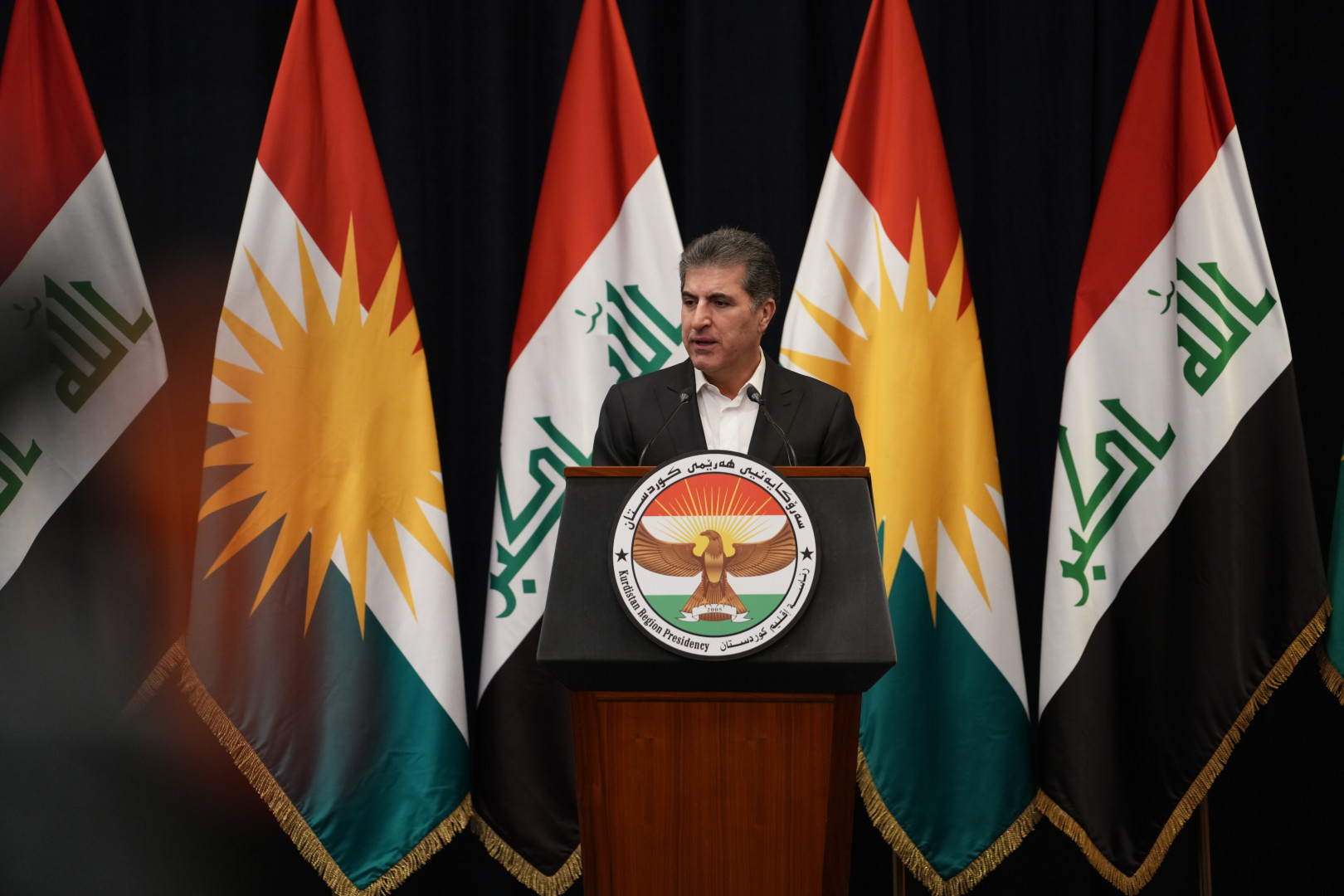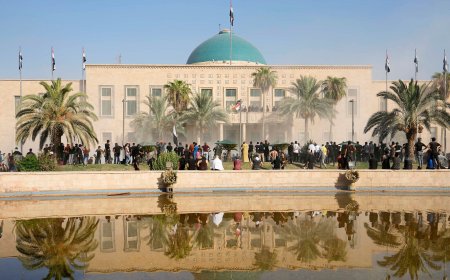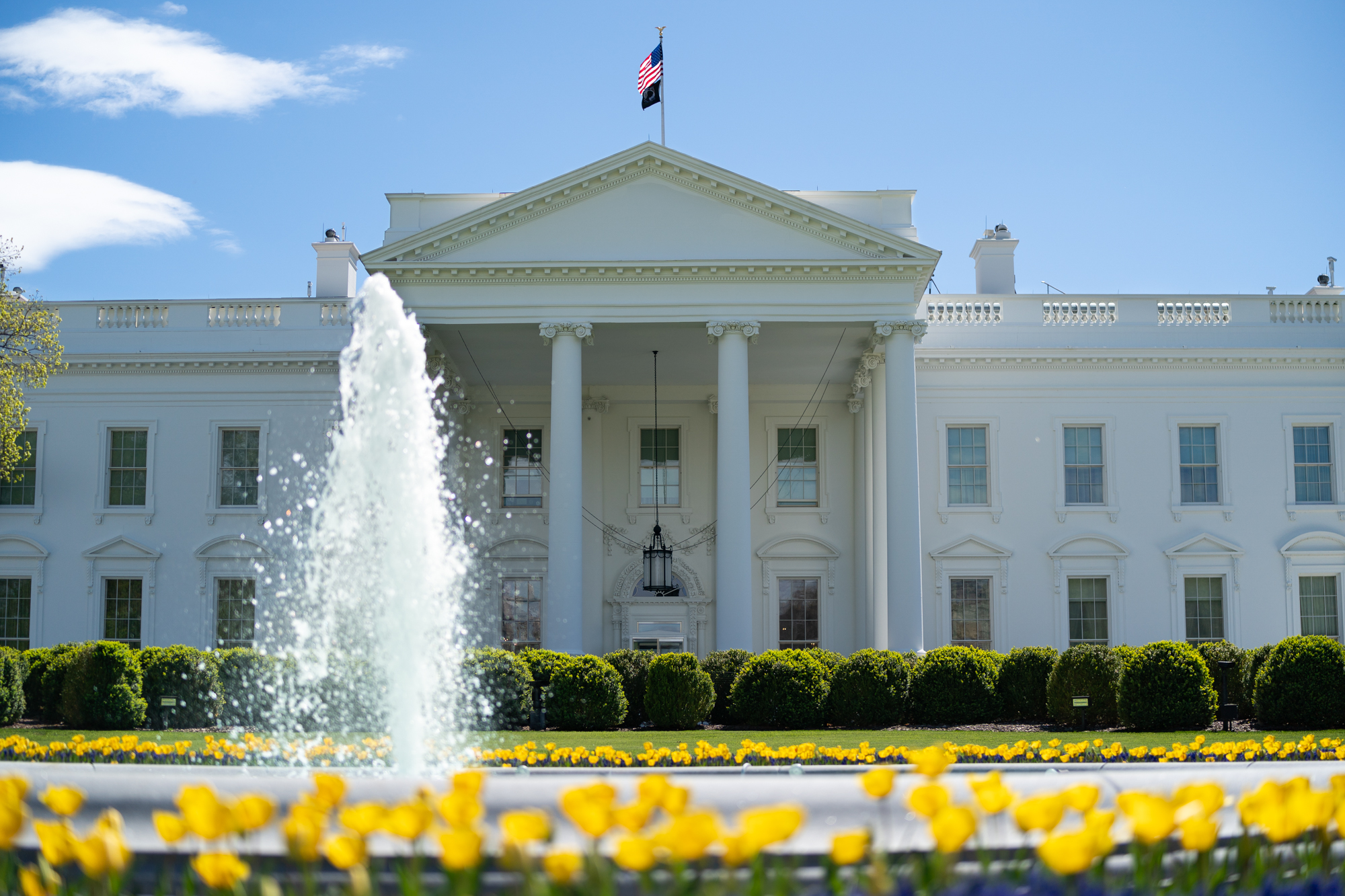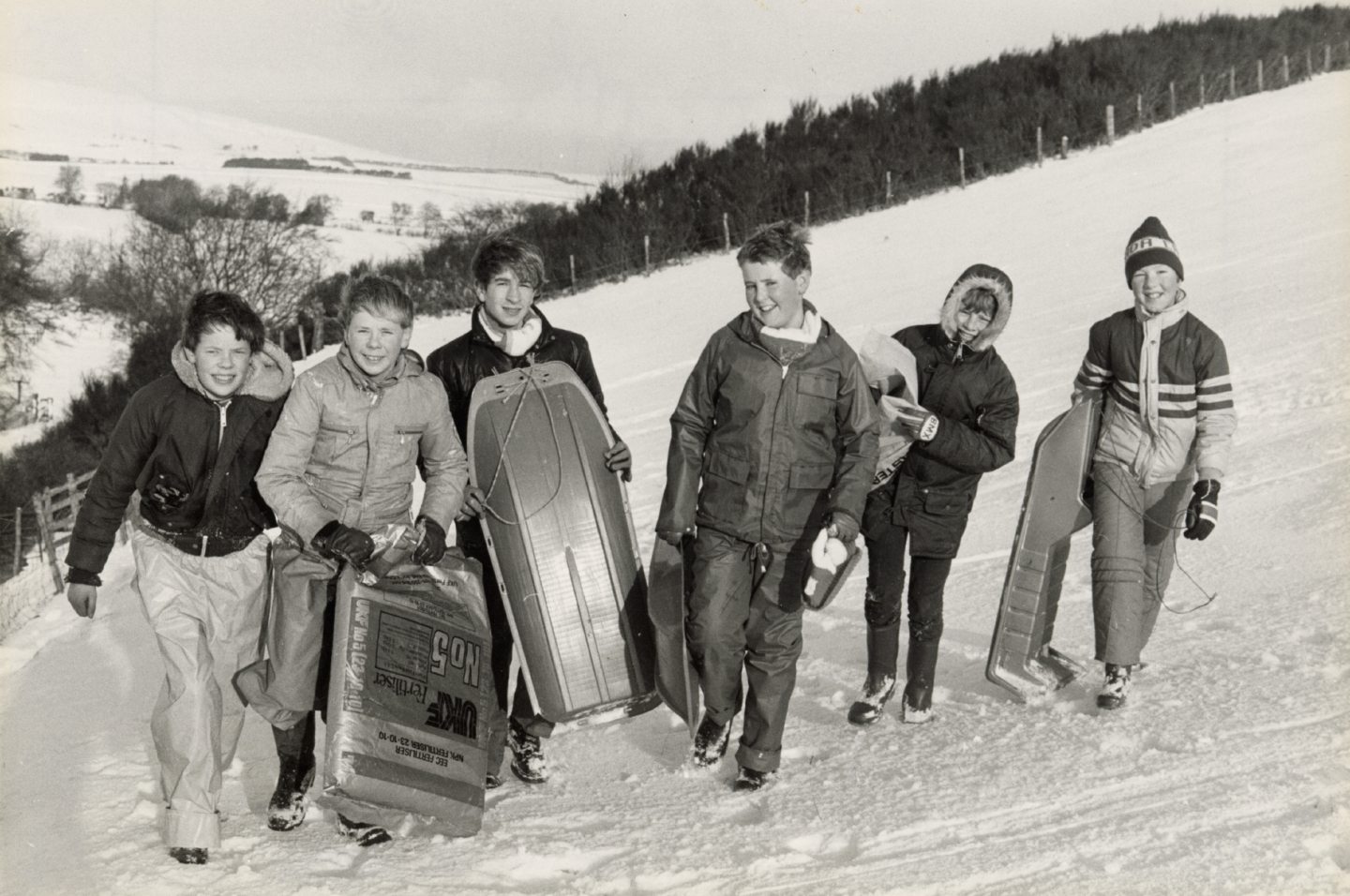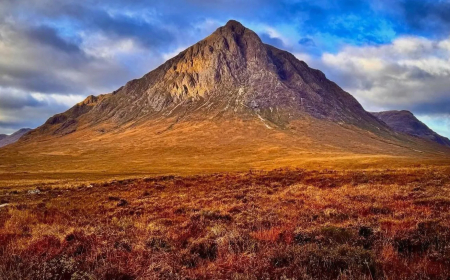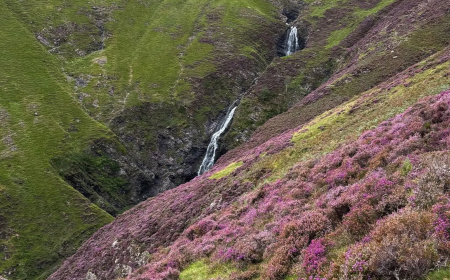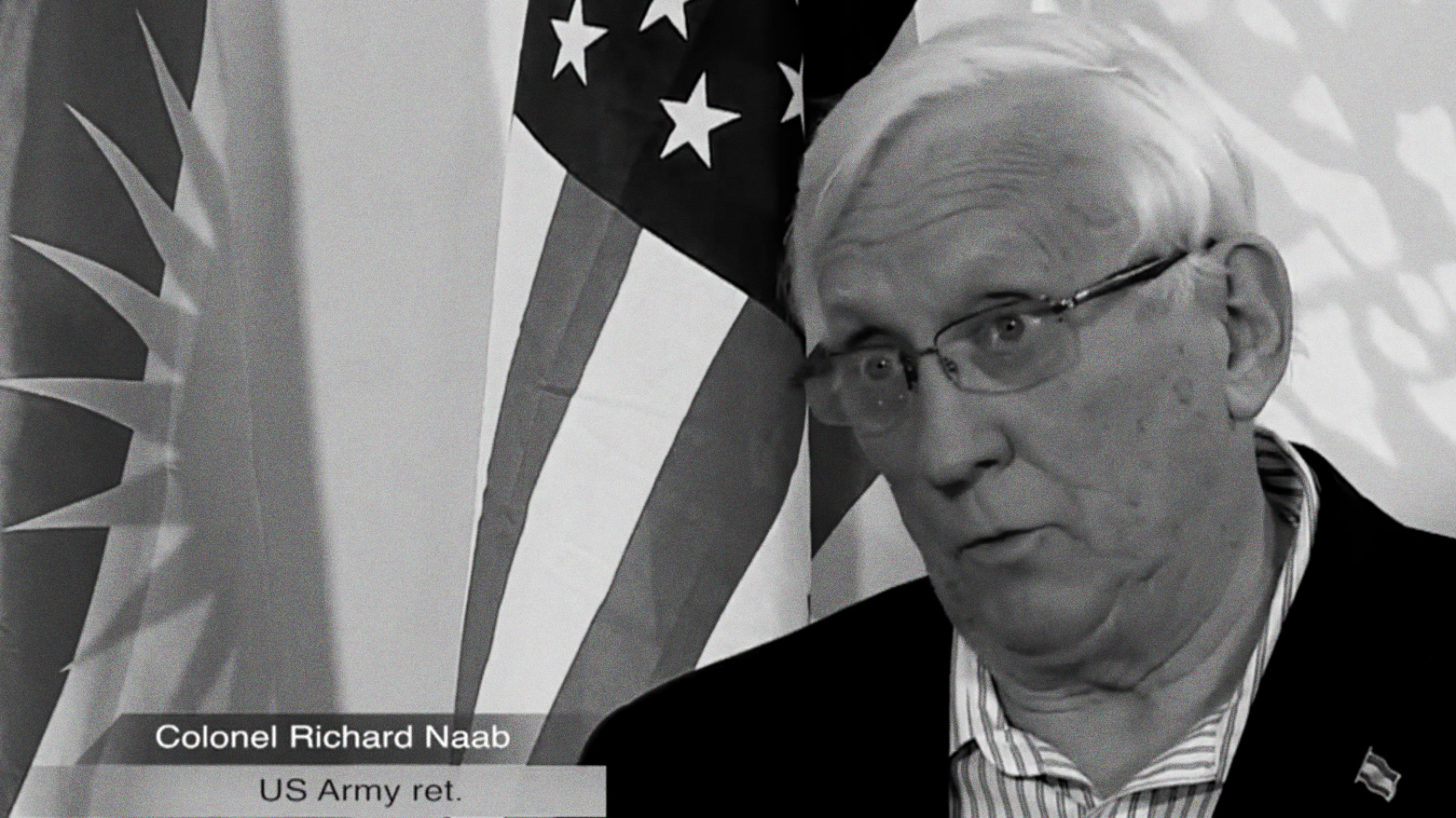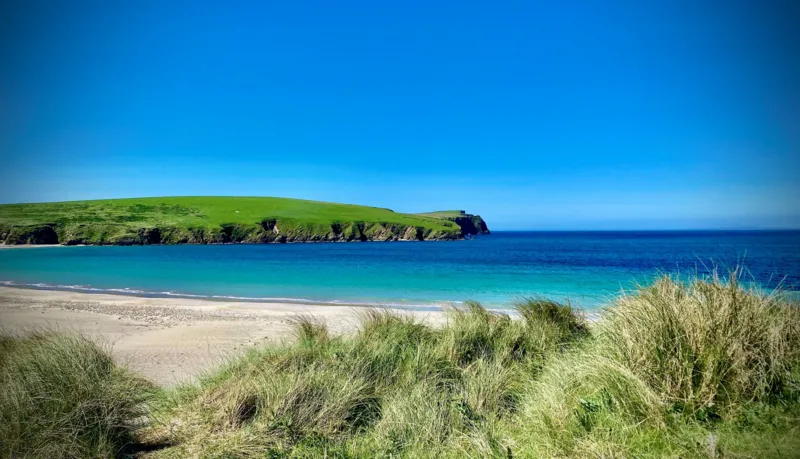The dangerous rise of Buddhist extremism: ‘Attaining nirvana can wait’
Still largely viewed as a peaceful philosophy, across much of south-east Asia, the religion has been weaponised to serve nationalist goals

In the summer of 2023, I arrived in Dharamshala, an Indian town celebrated as the home of the Dalai Lama, the Tibetan spiritual leader. The place hadn’t changed much since my last visit almost two decades ago. The roads were still a patchwork of uneven asphalt and dirt, and Tibetan monks in maroon robes filled the streets. Despite the relentless hum of traffic, Dharamshala had a rare stillness. The hills seemed to absorb the noise. Prayer flags flickered in the breeze, each rustle a reminder of something enduring.
But beneath the surface, the Buddhism practised across Asia has shifted. While still widely followed as a peaceful, nonviolent philosophy, it has been weaponised, in some quarters, in the service of nationalism, and in support of governments embracing a global trend toward majoritarianism and autocracy.
In countries such as Sri Lanka and Myanmar, where the conservative Theravada strain predominates, monks have emerged as central figures in movements that promote sectarian hatred, abandoning the teachings of the Buddha in favour of a more common and earthly goal: political power. My journey to Dharamshala and across other parts of the Buddhist world was driven by a need to understand how this transformation had occurred.
The question wasn’t just what had happened to Buddhism in these places, but what Buddhism had been before the transformation. One principle, above all, has come to define Buddhism in the eyes of the world: the foundational precept of ahimsa, or non-harming. The Sri Lankan monk Walpola Rahula, who taught at Northwestern University, defined the Buddha’s ahimsa as an injunction not only to avoid harming another person but to prevent violence committed by others.
Mahatma Gandhi embodied nonviolence in modern times. He responded to British colonial exploitation and violence with nonviolent non-cooperation. Gandhi’s methods included a 240-mile walk against unjust taxation and a 21-day hunger strike. In the 1950s, Martin Luther King Jr embraced Gandhi’s philosophy of nonviolent resistance for the US civil rights movement. “Christ showed us the way, and Gandhi in India showed us it could work,” King declared in 1956 during the Montgomery bus boycott.
Around the same time, events in Asia were bringing Buddhism into sharper focus for the west. In 1959, as Chinese occupying forces tightened their grip on Tibet, the 14th Dalai Lama made a dramatic escape on horseback across the Himalayas into India, capturing the world’s attention and highlighting Tibet’s struggle. By the 1960s, Buddhist monks were showing Americans how to sit still. Meditation and chanting, once viewed as esoteric practices, became stand-ins for Buddhism itself in the western imagination. The Dalai Lama’s peaceful response to China’s aggression, boosted by high-profile advocates such as the actor Richard Gere, cemented Buddhism’s reputation as a philosophy of nonviolence and inner peace.
For many disillusioned by materialism and in search of a more meaningful existence, it was exactly what they were looking for. But as the feminist writer and Buddhist bell hooks would later note, the western embrace of Buddhism often centred on the comforts of the materially secure. Soon enough, Buddha statues were being sold next to crystals, incense, scented oils and mindfulness apps. What had once been a radical philosophy of renunciation and interdependence began to resemble the very consumerism it was supposed to critique.
As for nonviolence, certain historical complexities were ignored. Few new followers knew that a previous Dalai Lama, Thubten Gyatso, had reformed the Tibetan army in 1913, or that rivalries between monasteries in Tibet occasionally led to monks taking up arms. Even the distinct traditions within Buddhism – Mahayana, Theravada and Tantric – were smoothed into a single, marketable idea: Buddhism as balm.
This is partly why the notion of Buddhist militancy comes as such a shock to many in the west. Yet by the 2000s, in Buddhist-majority nations such as Sri Lanka and Myanmar, nationalist groups were adopting strikingly similar tactics: fearmongering, militant organising and inciting violence. A strategy of communal division, rooted in colonial-era policies, was adapted to contemporary anxieties and used to terrorise fellow citizens.
In Sri Lanka, the saffron robes of Buddhist monks have become a fearsome symbol for the country’s Muslim minority, as groups including the Bodu Bala Sena rally followers under the banner of “protecting” Buddhism. In Myanmar, similar robes adorn figures such as Ashin Wirathu, who incited hatred of the Rohingya. The monks leading these violent movements seem driven not by a pursuit of nirvana in the afterlife, but by a quest for dominance in this one. Their actions, I came to understand, were shaped in part by historical forces such as colonialism, which introduced racial hierarchies and privileged certain religions over others. Economic inequality compounded these tensions, compelling the public to seek solace in religion and, in turn, granting monks disproportionate social and political influence. What emerged was a pattern that mirrors other parts of the world: violent nationalist movements gaining momentum at the expense of minorities, with those in power weaponising a sense of victimhood to consolidate control.
These monks also illuminate a lesser-known dimension of Buddhism: its patriarchal structure. Across south and south-east Asia, particularly within the Theravada tradition, male monks enjoy privileges systemically denied to women. Figures such as Wirathu, lionised by their followers and legitimised by their robes, make visible the hierarchies: who is elevated, who is heard, who is silenced. Their rise shows how nationalism entwines with masculine ideologies to reinforce male dominance. Partly in response, Buddhist nuns have emerged as some of the most courageous challengers of political repression and religious patriarchy. In Tibet, many have protested against Chinese rule at great personal risk – some to the point of self-immolation, while others have disappeared.
At the Library of Tibetan Works and Archives in Dharamshala, the scholar Geshe Lhakdor offered a stark assessment of the moral crisis confronting the Buddhist clergy. Paraphrasing Martin Luther King Jr, he said: “I don’t feel sad when bad people do bad things. I feel sad when good people don’t do anything.” The real danger, he explained, wasn’t just the extremists – but the deafening silence of the majority.

In Dharamshala, I met Lhakpa Tsering, who had gained international attention in 2006 when, as a 23-year-old, he had set himself on fire outside the Taj Mahal Palace hotel in Mumbai. A Tibetan refugee, Lhakpa timed his act of protest to coincide with a visit from Chinese premier Hu Jintao. Now in his 40s, Lhakpa is a married father running a small cafe high in the hills of Dharamshala. His resistance has taken on a different shape: he writes and directs plays about Tibetan refugee life. The fire hadn’t visibly disfigured him, but he told me that he sometimes still felt a twinge of pain where his skin had burned. As we sat in his cafe eating dumplings, he asked if I knew the story of the Buddha and the starving tigress.
In the story, the Buddha, as a prince, encounters a starving tigress and her cubs. Seeing that the tigress is too weak to hunt, the prince leaps from a cliff, offering his body as a sacrifice. “I will kill my miserable body by casting it down into the precipice, and with my corpse I shall preserve the tigress from killing her young ones and the young ones from dying by the teeth of their mother.” The moral of the tale is clear: though the Buddha abhorred even self-inflicted violence, such sacrifice could be justified if it served the greater good. “To sacrifice your body for the wellbeing of another,” Lhakpa told me, “is the highest form of nonviolent action.”
For Lhakpa, self-immolation wasn’t only an act of protest: it was the living continuation of an ancient Buddhist tradition of profound sacrifice. His willingness to surrender his body echoed the transcendent generosity the Buddha showed the starving tigress. Yet, I was conscious that stories such as this had also become ammunition for violent Buddhists who justified aggression by claiming their actions were similarly motivated by the greater good – to protect Buddhists, and Buddhism itself. As I left, Lhakpa stacked our teacups and wiped down the table. The prayer flags kept fluttering above the hills. In the town below, the monks walked as they always had. But something had shifted. The silence no longer sounded like peace.
Later that summer, I drove south from the Sri Lankan capital, Colombo, to meet Fazeena Fihar, a Muslim tutor who had survived a harrowing ordeal. Her village, Adhikarigoda, was a breezy hamlet of whitewashed houses and fragrant trees. Fihar, a tall woman of 41, wore a hijab and had sharply defined cheekbones. As she ushered me into a living room where the sofa was still wrapped in plastic, I noticed that the walls were conspicuously bare – no family photographs, no academic certificates, none of the proud displays so common in Sri Lankan homes. I didn’t have to ask why.
In 2014, a mob had ransacked Fihar’s house, tramping through the family’s mango orchard, torching their tuk-tuk and setting fire to all their belongings. Beds, tables, crockery and curtains, photo albums and schoolbooks, even a doll’s house were reduced to ashes. Everything around me, from floor to ceiling, was new, rebuilt over many difficult years.
Fihar brought me tea in a delicate white cup but refused to sit. She stood with her gaze fixed on the open window overlooking the empty road. “Did you see the videos?” she asked. “It was purely against Muslims. ‘Don’t go to their shops. Don’t eat their food.’”
Fihar was referring to a speech by a Buddhist monk named Galagoda Aththe Gnanasara. By 2023, Sri Lanka had no shortage of controversial clergy, but Gnanasara stood apart. His exploits were legendary: he’d been in hit-and-runs, pleaded guilty to drunk driving and flaunted luxury cars and coteries of bodyguards.
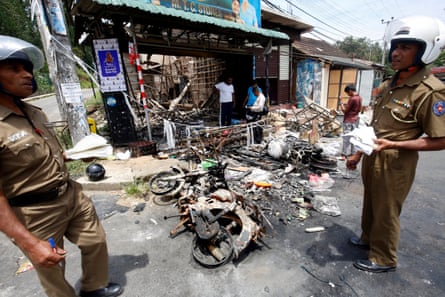
Understanding Sri Lanka’s complex religious landscape is critical to making sense of Gnanasara’s rise. In this island nation of 22 million, Buddhism is not merely a faith but a cornerstone of national identity for the Sinhalese majority, who make up more than 70% of the population. The constitution itself grants Buddhism “the foremost place”, creating a delicate balance – or imbalance – between secular governance and religious preference, and often making the country’s religious minorities, including Tamil Hindus (12.6%), Muslims (9.7%) and Christians (7.4%), feel like second-class citizens.
The reverence afforded to monks explains why figures such as Gnanasara are allowed to remain in the clergy despite committing repeated transgressions that, according to the Vinaya – the monastic code of conduct established by the Buddha himself – should automatically result in disrobing.
Gnanasara has a talent for reinventing himself. Born in 1975 in Galle, on Sri Lanka’s south-western coast, he came from a family of very modest means. He has several siblings and remains close to his elderly mother. He says he began his monastic life as a forest monk, living in cave-like dwellings in the dry tropical forests, devoted to rigorous mental and moral discipline. Anyone familiar with the man he later became may find this origin story hard to credit. According to Gnanasara, within a few years he had exchanged the solitude of the forest for the bustle of Colombo, where he enrolled at a monastic university. In Colombo, a different story about Gnanasara’s past circulated. Rather than being called to religion, he was, people said, a small-time thug who had donned the robes to avoid prison time.
In the mid-00s, Gnanasara joined the Jathika Hela Urumaya (JHU), the world’s first political party formed entirely of Buddhist monks. He stood for parliamentary elections, which he lost. Over time, he developed a close relationship with Sri Lanka’s most powerful and polarising political dynasty, the Rajapaksas. “Regardless of who is in power,” Ambika Satkunanathan, the former commissioner of the Human Rights Commission of Sri Lanka, told me, “all the Sinhalese parties are a little bit scared of the monks. Before announcing a new policy, they always go to the monks to explain it to them and get their support. Whatever power the monks have is what politicians have given them.”
In 2012, Gnanasara cofounded the Bodu Bala Sena (BBS), or Army of Buddhist Power, which claimed to protect the Buddhist majority from threats posed by minority religious groups. Among its key demands were preferential treatment for Buddhist students, and a ban on Muslim practices such as the slaughter of cattle for religious rituals and the certification of products as halal. Gnanasara and his BBS cohort hosted rallies that drew thousands and leveraged their social media following to spread their message. Their rhetoric escalated. At one rally, Gnanasara declared: “This country still has a Sinhala police, a Sinhala army. After today if a single [Muslim] or some other [minority] touches a Sinhalese … it will be their end.”
This rhetoric didn’t emerge in a vacuum. Sri Lanka had been torn apart by a 26-year civil war that had only ended in 2009. The war had pitted the government against Tamil separatists fighting for an independent state. While often framed as an ethnic conflict, with most Tamils being Hindu and most Sinhalese Buddhist, the war left deep scars and heightened tensions among all of Sri Lanka’s diverse communities.
Most people I met told me that, despite his divisive positions, Gnanasara was all but above the law. Sri Lanka’s president, Gotabaya Rajapaksa, who would later be forced to flee in a helicopter amid mass protests, had appointed the monk to lead a taskforce charged with making legal amendments that were clearly anti-Muslim. Gnanasara received all the attendant privileges of a politician in south Asia, including armed guards and sycophantic deference. Rauff Hakeem, a member of parliament and leader of the country’s largest Muslim political party, told me: “The yellow robes are untouchable.”
When confronted about his actions, Gnanasara once told the press that it was his duty to act against any threat to Buddhism. “Attaining nirvana,” he declared, “can wait.”
On 15 June 2014, Gnanasara arrived in Aluthgama, a town on the west coast of Sri Lanka, ostensibly to support a monk who had argued with some Muslim youths on a busy road. The young men had already been forced by police to kneel before the offended monk and apologise. The monk had slapped them across the face; his supporters then attacked some Muslim-owned shops.
News of Gnanasara’s arrival had spread quickly across social media, where his already sizable following was growing by the hour. A stage was set, and the media invited. By the time he emerged from his chauffeur-driven car, looking more aggrieved than usual, a crowd of 7,000 had gathered, many of them robed monks, all eager to hear their guru speak.
Forty minutes away, Fihar was at home, still recovering from the birth of her third child just days earlier. As her older children played nearby, she nursed the baby and chatted with her husband, Muhammed. Soon, their phones began pinging with WhatsApp messages showing clips of Gnanasara’s speech. “Enough is enough,” he declared, urging the cheering crowd to “fight” the country’s minorities. When the speech ended, Buddhist mobs surged through Aluthgama, torching Muslim homes and shops.
The violence escalated swiftly, and it wasn’t long before the mobs reached Fihar’s village. She stood at the window, her newborn pressed to her chest, listening to the rising cries as they drew closer. Her body was rigid with fear. “We phoned the police,” she told me. “They said, ‘We are coming, we’re coming,’ but they never did.”
Also absent were her Sinhalese neighbours, whose children Fihar had taught for many years. “That day,” Fihar said, “they forgot about me.” When the mobs reached the gates of her home, Fihar and her family had vanished into the dense jungle. All they took with them was the deed to their house and some gold jewellery.
Over the next several hours, Sri Lanka descended into its worst episode of religious violence in decades. Muslims were beaten in the streets. Their shops were smashed and looted, their homes engulfed in flames. Even mosques were set ablaze.

On the night of the violence, when reached by CNN, Gnanasara said that he was unavailable to comment. Dilanthe Withanage, the chief executive of the monk’s anti-Muslim group, told the news channel: “It is true our priest spoke in strong words. He blessed the people after chanting verses. He preached to them to conduct themselves peacefully.” The allegations against the BBS, Withanage said, were “an attempt to bring disrespect to Buddhist clergy and Buddhism”.
When the violence ended, three people were dead – a small number, given the size of the mobs and the police’s failure to intervene over nearly 24 hours. Fihar returned with her family the following day. Her house was still standing, but the roof had collapsed and the walls were black with soot. It took them a year to rebuild their home, she told me. Not only did she refuse to leave the neighbourhood, she still teaches the children of the Sinhalese families who live nearby. When I asked why, she told me that she didn’t have a choice. But, she added, grimly, neither did they. “They need me to teach them,” she said. “And I need them to pay me. We need each other.”
One likely reason for the low death toll in 2014, said Satkunanathan, the former human rights commissioner, was that the attackers were driven less by a desire to kill than by “economic envy”. Most Muslim families, like Fihar’s, owned their homes and travelled by tuk-tuk or motorcycle. They were seen as ambitious, successful in business and upwardly mobile.
This economic dimension adds another layer to the country’s religious tensions. In Sri Lanka faith remains inextricably linked with politics, but also commerce. The perception that certain minority communities enjoy outsized economic success has long fuelled resentment among segments of the Sinhalese majority – resentment that nationalist rhetoric and militant monks eagerly exploit.
Ifirst visited Sri Lanka in the early 00s, during the final years of the civil war. By then, the north of the country was largely under the control of the Liberation Tigers of Tamil Eelam (LTTE), the armed separatist group formed in 1976 in response to decades of state-led discrimination against Tamils. When I visited, only the Jaffna peninsula remained outside LTTE control.
The Tamils I spoke to despised the Sri Lankan army and government and yearned for a country of their own. Not all agreed with the LTTE’s tactics – suicide bombings, the recruitment of children as soldiers – but they called the LTTE “our boys”. They described them as heroes. Meanwhile, most of the Sinhalese I met wanted the LTTE crushed by any means necessary. They were frustrated with the government’s inability to defeat the group, despite military aid from India and Israel and the broad condemnation of the insurgents by western governments.
One might have expected the Buddhist clergy to play a pacifying role. Instead, many high-profile monks pushed for intensified military action, leading the national media to coin the term “war monks”. Among them was Athuraliye Rathana Thero, a leading figure in the creation of the Jathika Hela Urumaya (JHU), or the National Heritage party, which Gnanasara would later join. In 2004, the year it was founded, the JHU won nine seats in the general elections. For the first time, Buddhist monks sat in parliament alongside career politicians.
The JHU is widely viewed as the mother ship of modern Buddhist nationalism, fostering anti-minority sentiment in Sri Lanka much as the Hindu nationalist Rashtriya Swayamsevak Sangh had done in India. “Talk can come later,” Rathana told the Telegraph in 2007. “We need war.” Today, he is a four-time member of parliament who continues to deliver inflammatory speeches and stages hunger strikes to push his agenda.
After the war ended in 2009 with the government’s victory over the LTTE, militant monks, with the backing of Sinhalese nationalist politicians, turned their gaze toward Sri Lanka’s Muslims. They cast Muslims as outsiders whose religious and cultural practices posed an existential threat to Sinhala-Buddhist identity – just as they had once claimed of the Tamils.
Muslims were as integral to the island as any other religious group. Arriving as Arab traders in the seventh century, they had built deep-rooted communities. But for nationalists eager to consolidate power, Muslims served a different function. By portraying them as aligned with a global Islamic order rather than the Sri Lankan state, nationalists suggested they could never truly belong. In doing so, groups such as Gnanasara’s BBS helped stoke a moral panic, recasting Muslims as the ultimate “other”. Between 2012 and 2015, according to state agencies and human rights groups, Muslims were targeted in hundreds of violent incidents.
This narrative of Muslims as the “enemy within” sat uneasily beside the Buddhist ideal of ahimsa, or non-harming. Monks are meant to embody this principle. Yet in Sri Lanka, the militant monks who stirred up anti-Muslim hatred were not outliers – they were expressions of how completely Buddhism had been conscripted to serve the ambitions of the state.
By the time I returned to Sri Lanka, more than a decade after the civil war ended, a new set of divisions had taken hold. The violence no longer resembled a single conflagration, but a series of smaller, smouldering fires, each capable of flaring out of control. Sometimes, between interviews, I would stop at a Buddhist temple or shrine. You didn’t need to be religious to feel moved by the rituals: lighting incense, offering fresh flowers or turning a prayer wheel. Though I couldn’t follow the mantras, I felt the peace they invoked. In moments like those, I struggled to reconcile Buddhism’s promise of compassion with the hostility unfolding around me.
As a Catholic, I’ve wrestled all my life with the stain of complicity within my own faith. In Europe, many churches stand tall not only as monuments to devotion, but to empires built on the backs of enslaved people and stolen lands in the Americas, Asia and Africa. Marble pillars and gilded altars were often paid for with blood money. Those reminders were never far from my mind in Sri Lanka where I found myself returning to a familiar question: are Buddhist monks so different from priests and clerics who vow to serve a higher purpose, yet sometimes lose their way? They are expected to be better than everyone else. But in a world shaped by conflict and fear, perhaps no vow, no matter how sacred, is entirely safe from the pull of politics.
Three months after the 2014 mob attack in Aluthgama, Galagoda Aththe Gnanasara hosted a special guest in Sri Lanka: Ashin Wirathu. At the time of his visit, Wirathu was already the world’s most notorious Buddhist monk. In 2013, he had appeared on the cover of Time magazine with the headline The face of Buddhist terror, highlighting his role in inciting deadly riots in towns such as Meiktila, where dozens of Muslims were hunted down and killed. Despite this, the Sri Lankan government not only approved his visa but also gave him a security detail.
At a stadium packed with tens of thousands of monks, nuns and laypeople eager to hear him speak, Wirathu announced that his 969 movement would collaborate with Gnanasara’s BBS to “protect Buddhism around the world”. He offered no further clarification, leaving his message open to interpretation. “It’s the responsibility of monks, as Buddha’s sons, to teach bad and uncivilised people to become good and civilised,” he said.
The rally marked a major success for Gnanasara, boosting his profile among Sri Lanka’s growing rabble of militant monks. With his rising influence, his speeches became increasingly inflammatory. He expressed disdain for women in hijab and made false claims about the Qur’an permitting Muslims to acquire the wealth of non-Muslims through fraudulent means. When Muslim leaders challenged his fabrications, he issued the chilling threat of “another Aluthgama”.
Then in late February 2018, an incident in Digana, a small town in Sri Lanka’s Central Province, sparked exactly this. A group of Muslim men assaulted a Sinhalese Buddhist truck driver, who later died from his injuries. Mainstream media and social networks amplified the story. On Facebook and WhatsApp, people called for revenge. One widely shared post quoted a monk telling his followers: “The sword at home is no longer for cutting jackfruit – sharpen it and go.”
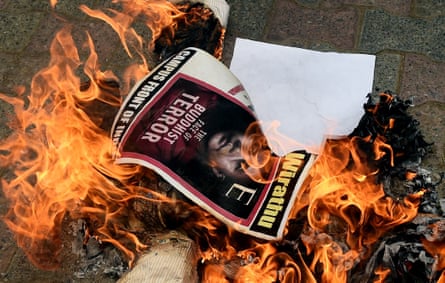
Among the militant monks, Sinhalese nationalists and angry young men who converged on Digana was Ampitiye Sumanarathana Thero, a notorious social media personality and ordained monk. Sumanarathana enjoyed filming himself threatening minorities. In one viral video, he marched up to a man and bellowed: “Every single Tamil will be cut into pieces! They will all be killed!” In another widely circulated clip, he slapped a Christian clergyman whom he accused of missionary activities in a Buddhist area.
In Digana, Sumanarathana stormed into a police station to demand the arrest of the Muslims responsible for the assault on the truck driver. Gnanasara also came to town, ostensibly to offer condolences to the dead man’s family. Within hours of his arrival, a Muslim-owned grocery store was looted and set on fire. Later, a mob of several hundred descended with sticks, stones and gasoline.
By the end of the violence, over 300 homes, more than 200 shops, dozens of vehicles, 20 mosques and two Hindu temples had been destroyed. A 27-year-old man named Abdul Basith was dead. “The state failed in its duty to protect the Muslim minority during attacks; hold perpetrators to account; and deliver justice,” declared Amnesty International.
The international outcry finally prompted action. The government arrested more than a hundred people, including prominent Sinhalese nationalist leaders. Yet the monks Sumanarathana and Gnanasara were not approached by the police.
In Colombo, after days of waiting, Gnanasara finally agreed to meet me. When the time came, his armed guard led me into a dim room that reeked of stale incense. The militant monk sat at the far end, hunched over his phone. He was larger than I had expected, and his neon orange robe kept slipping off his shoulder, exposing loose, pale flesh. He didn’t bother fixing it. A group of monks filed in, smiling blandly. One of them started lecturing me about Buddhism. “You have to practise it,” he droned. “Don’t do bad things.”
Gnanasara finally looked up, scowling. “Enough,” he barked.
His spokesperson, Withanage, translated with an apologetic smile. Withanage was an odd character. Armed with an electronics engineering degree from Tbilisi, Georgia, he dedicated his time in Sri Lanka to defending Gnanasara’s hate speech. In an interview with a news magazine, he had accused Christian evangelicals of luring Buddhists to convert with promises of material reward. “They come, they preach, they tarnish the image of Buddhism here,” he said. “And they offer jobs, they offer positions, if they convert to Christianity. And jobs are offered, houses are offered.”
During my time on the island, I had noticed a shift: the hostility once directed at Muslims was now turning toward Christians. Newspapers carried reports of pastors attacked, churches vandalised and worship obstructed. It was as if the monks had decided they had taken their campaign against Muslims as far as it could go, and now needed a new enemy to remain relevant and keep their audience engaged. Far from being guided by scripture, these men seemed to be working to an algorithm.
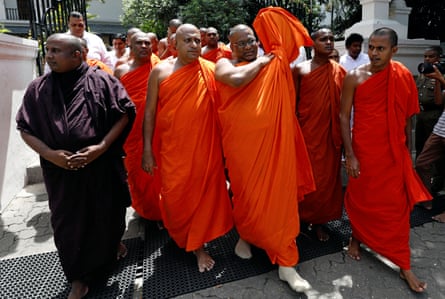
I asked if Gnanasara saw himself as a political leader. Withanage translated with a beaming smile, as though he knew the question would flatter.
“That’s how people choose to see me,” Gnanasara said with a smirk, before slipping into a well-worn tirade about the need to defend Buddhism from foreign contamination. He waddled towards a plush armchair, tucking his phone into his robe; each notification lit up his belly like a lantern. “We must protect our culture,” he declared. “But we never use violence.”
Who exactly was he protecting it from, I asked. He didn’t hesitate. He pointed to the Easter bombings of 2019 – carried out by domestic Muslim extremists who targeted churches and luxury hotels – as evidence of what he called a broader Muslim conspiracy to destabilise the country. He alluded grimly to an “organised network” operating in the shadows.
When I suggested his own rhetoric might fuel violence, he snorted. “The media twists everything,” he said. “They even claimed I threatened to slice up a Muslim politician. How could I say such a thing?” He broke into loud laughter. The monks around him followed instantly, their laughter swelling as if it were a joke. They sipped tea and chewed cashew nuts, urging me to help myself. Then they turned their attention back to their phones, scrolling casually.
Withanage continued to translate Gnanasara’s staccato Sinhalese. The monk’s historical revisionism painted a picture of a Ceylon united by Buddhism until the British arrived with their divisive Christianity. Now, Gnanasara declared, the BBS was on a crusade to rectify this colonial meddling. As our conversation unfolded, Gnanasara’s demeanour oscillated between smug self-satisfaction and barely contained aggression. He spoke of “fighting” for Buddhist values with unsettling frequency, all the while insisting on the BBS’s commitment to nonviolence.
As I stood up to leave, Gnanasara tried to soften things. “We may have made mistakes,” he admitted, walking me to the door. Then, grinning: “But we always serve tea to visitors.”
[Source: The Guardian]
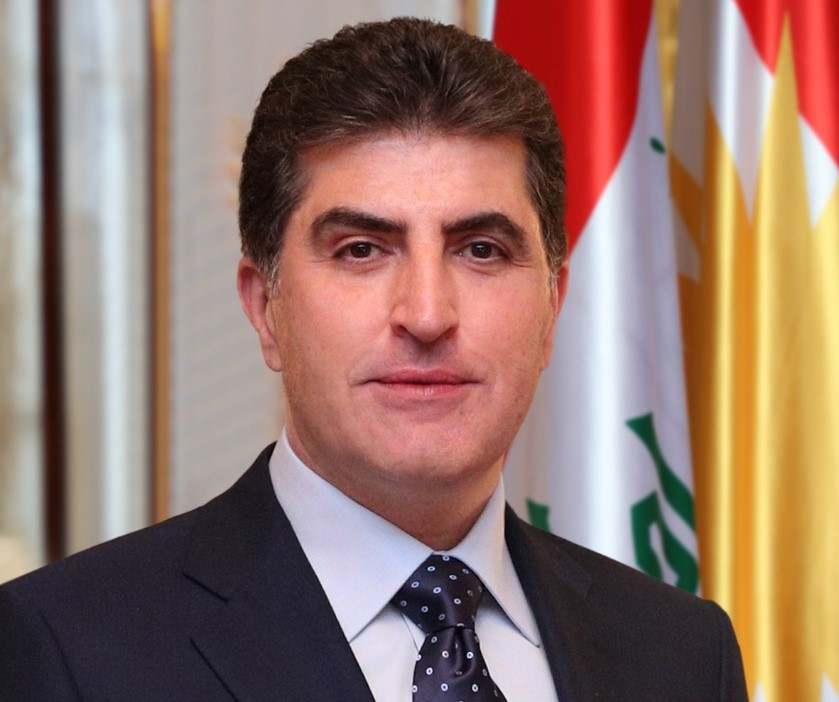
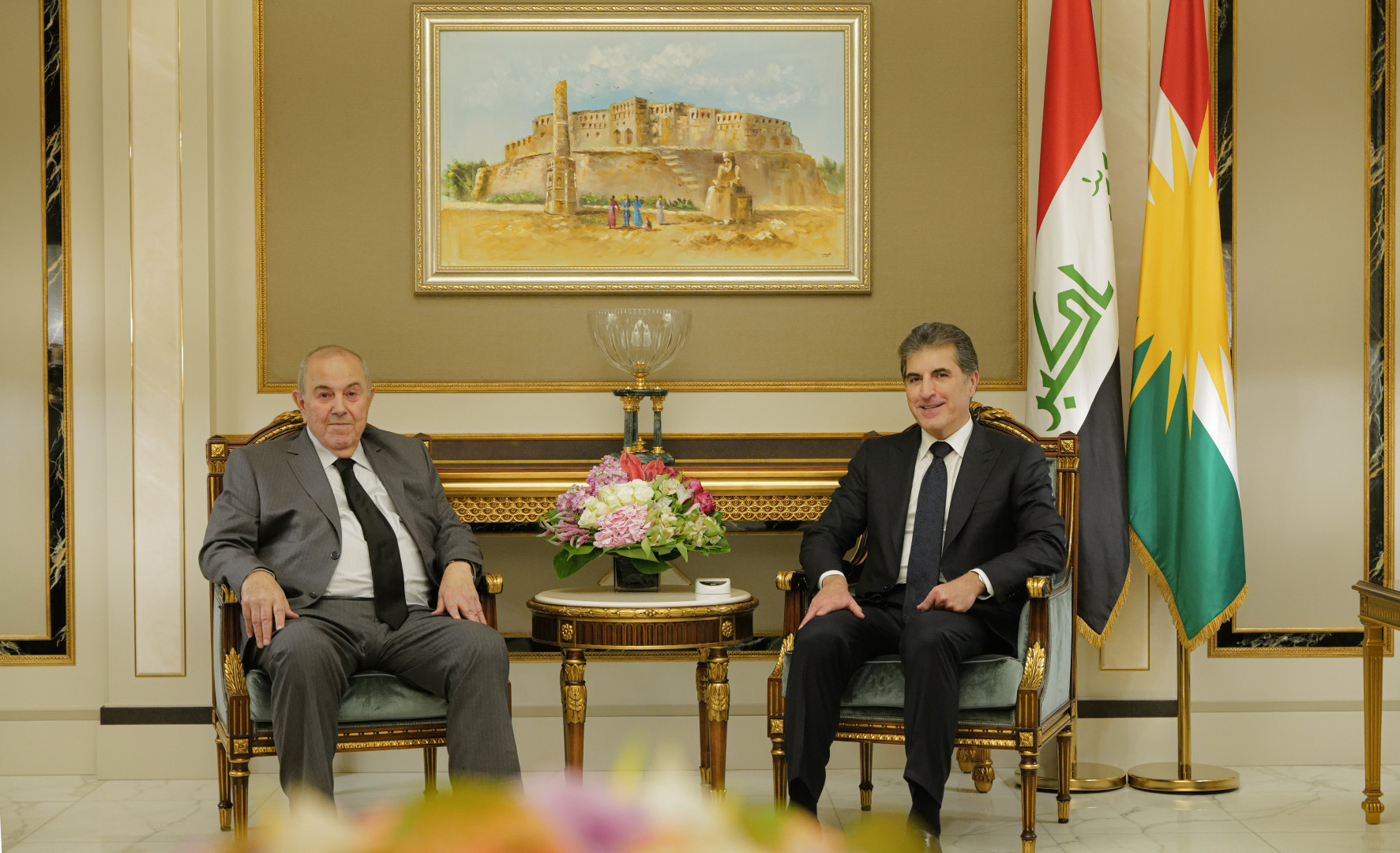





/file/attachments/2984/thamm-wardogs_634348_553ca63ee77f726aad84ee0773cdf004.jpg)



/file/attachments/2984/10accused_746259.jpg)


